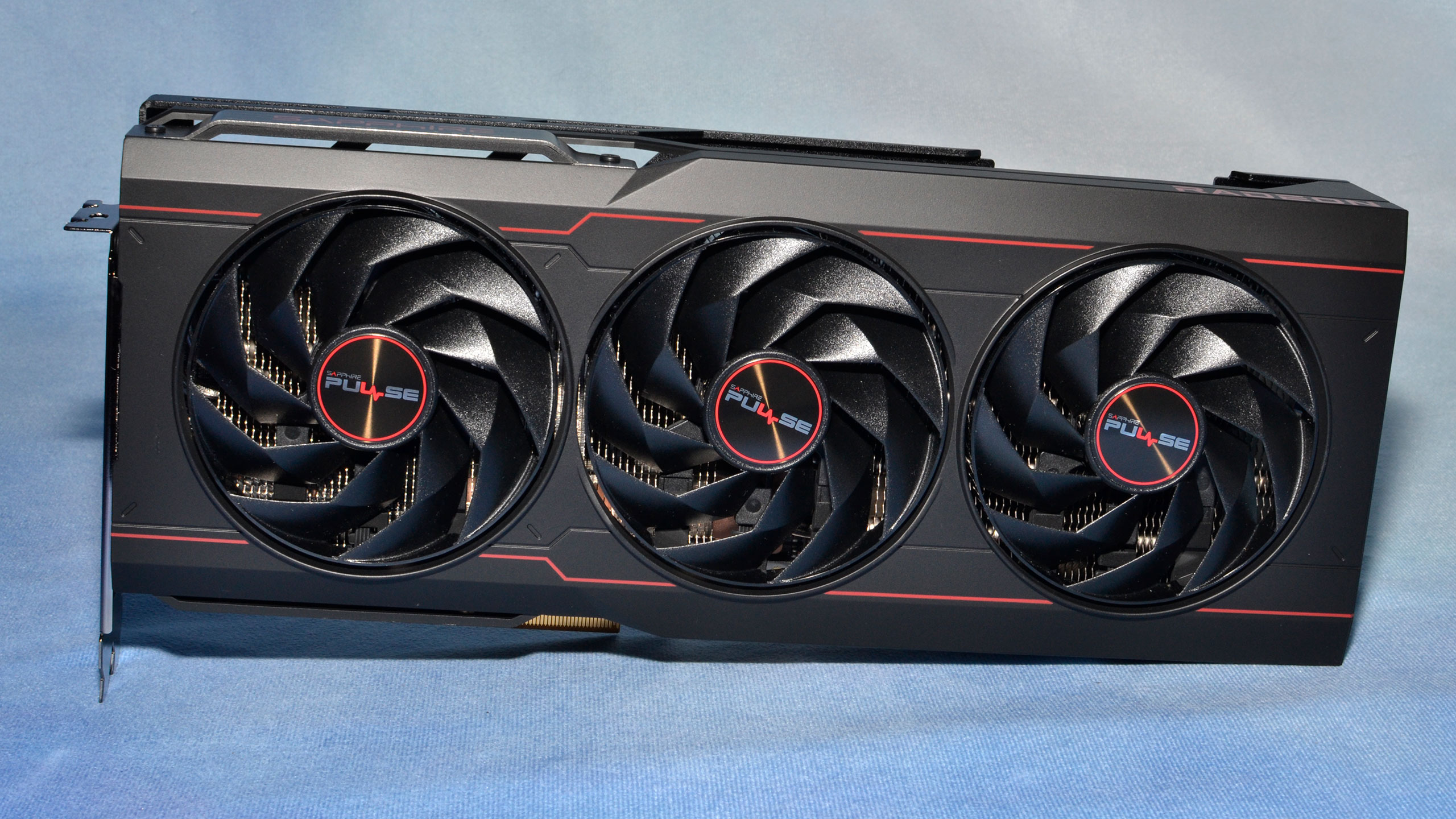Why you can trust Tom's Hardware
We have 1440p and 4K ultra benchmarks for this Sapphire RX 7900 XT review. Given the $799 typical price (with sales bringing it down to $779), we'll start with the 1440p ultra performance before moving on to the 4K gaming results.
Here's the overview, first with the 15-game full suite, and with separate rasterization-only and DXR-only (i.e. ray tracing) charts. We'll discuss the individual game results further down the page.
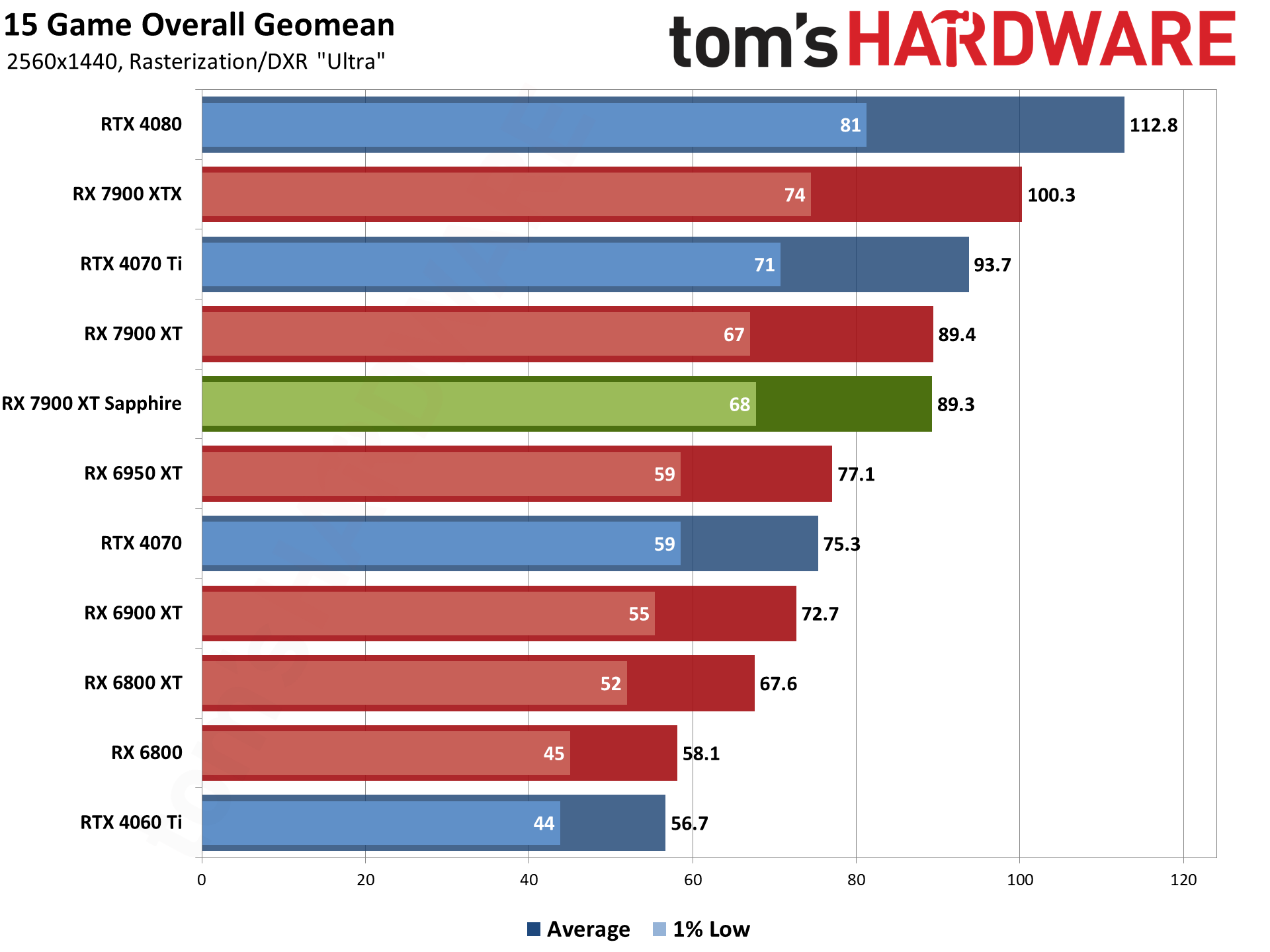
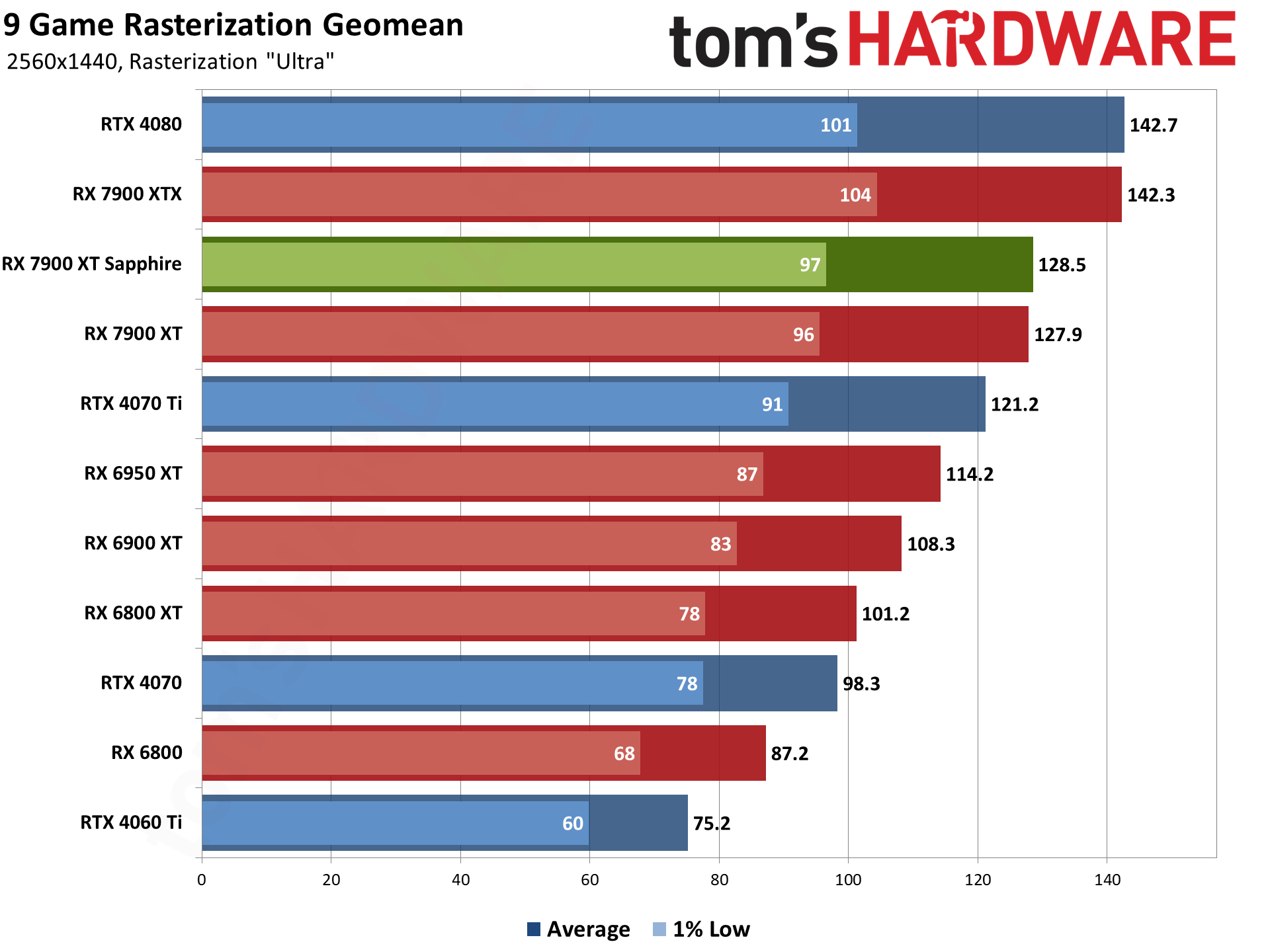

First, overall performance ends up exactly tied (a 0.1 fps difference) with the reference RX 7900 XT. It's interesting, because we've seen other tests of Sapphire's card where it's a couple of percent faster. That's what we'd normally expect, since it has a higher power limit and a minor factory overclock, but there's always a bit of variability between GPUs.
Maybe our sample card was a bit of a dud, or maybe our reference card is a bit better than typical. It's not drivers, either, as we previously tested the card with the same drivers that we used for our most recent reference GPU testing. Regardless, there's really nothing to worry about as no one would notice a less than 10% difference without running benchmarks.
The Sapphire card also lands between the RX 6950 XT and RTX 4070 Ti in performance, but here we need to look at the rasterization and ray tracing charts as well. AMD's GPU ends up slightly ahead of the 4070 Ti in rasterization performance with a 6% lead, but conversely ends up trailing by 19% in the DXR (DirectX Raytracing) test suite.
That's expected in general, and how much you want to weight rasterization versus ray tracing performance is a contentious subject. Some will argue ray tracing is just technical snake oil, others hail it as the next big thing for graphics. There are currently close to 150 games that have some form of ray tracing. That's the "good" news.
Subjectively, however, we'd say probably only fifteen or so rate as reasonably popular games where the RT effects make a noticeable difference. Not coincidentally, six of those games are in our test suite. We'd also say that good upscaling (DLSS, XeSS, or one of the better FSR2 implementations) often ends up being more useful than token ray tracing support.
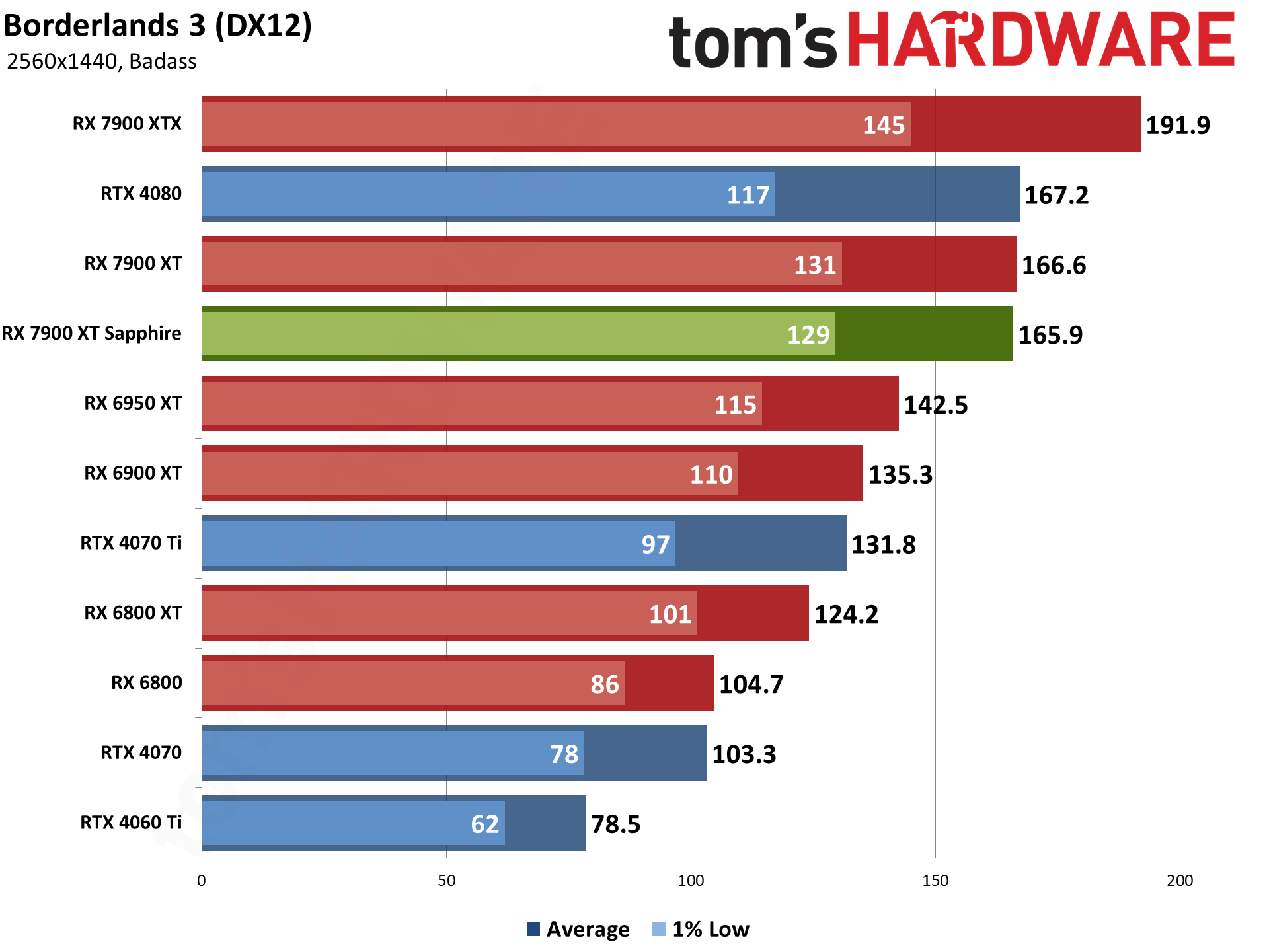

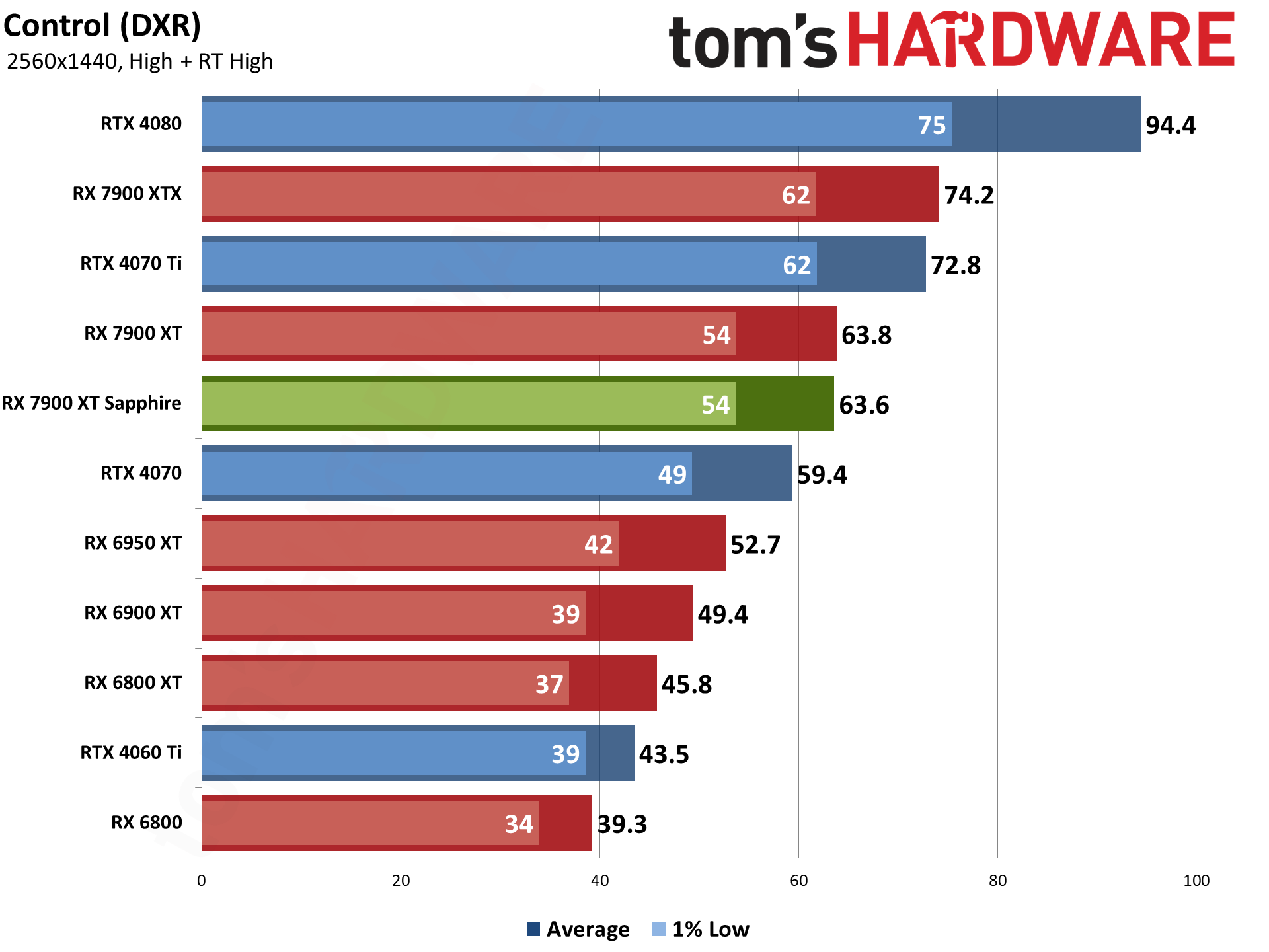

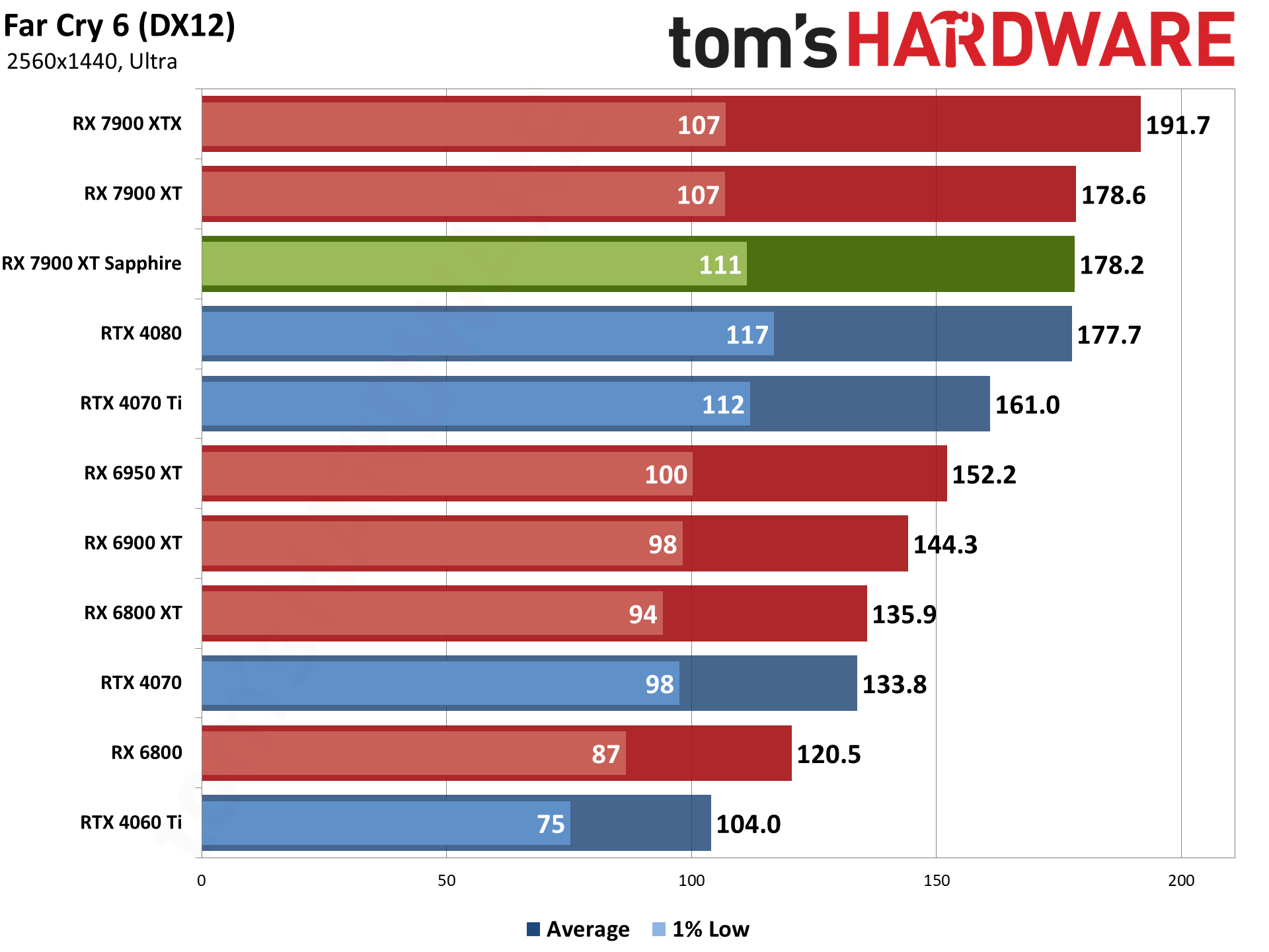

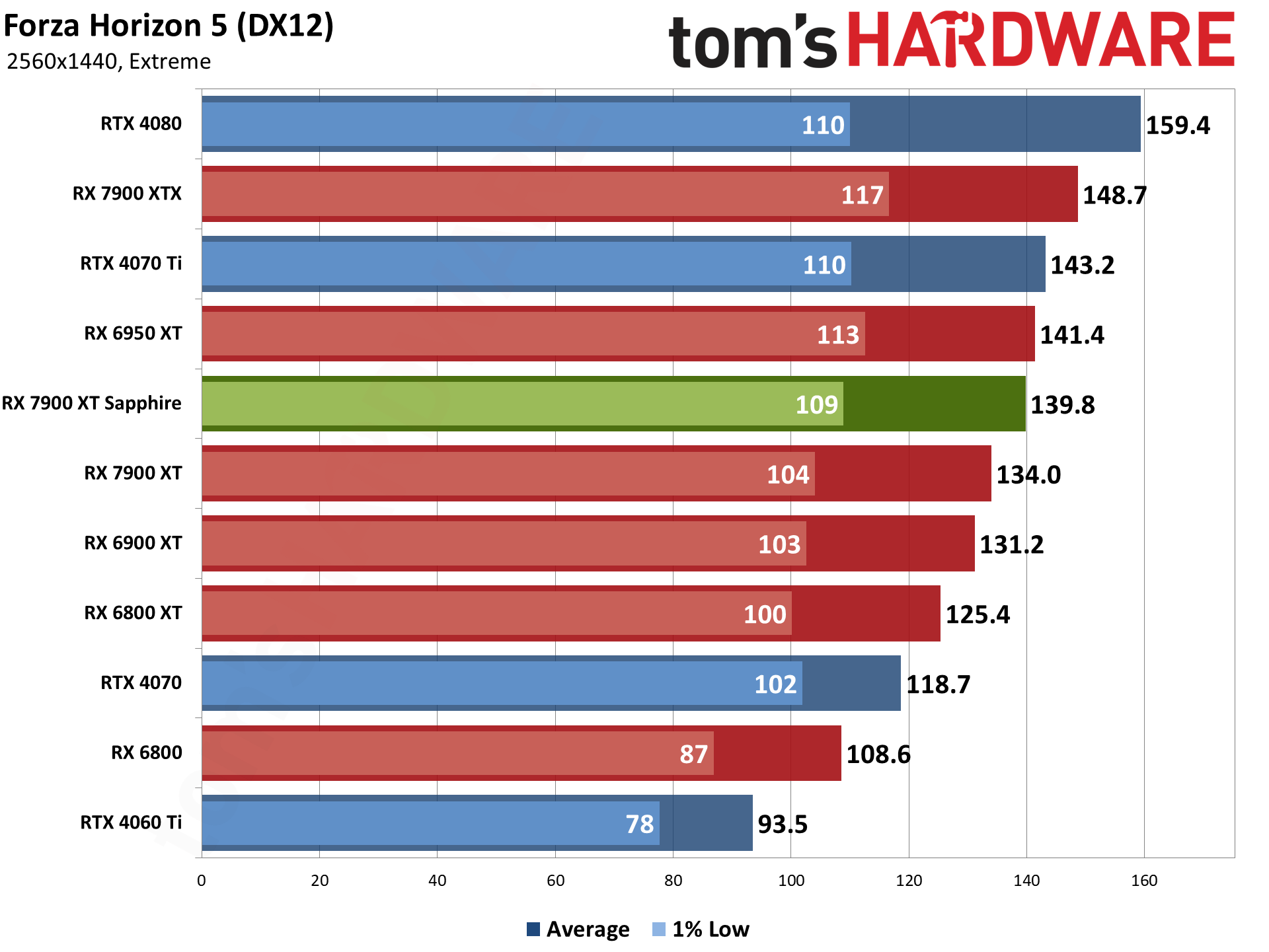
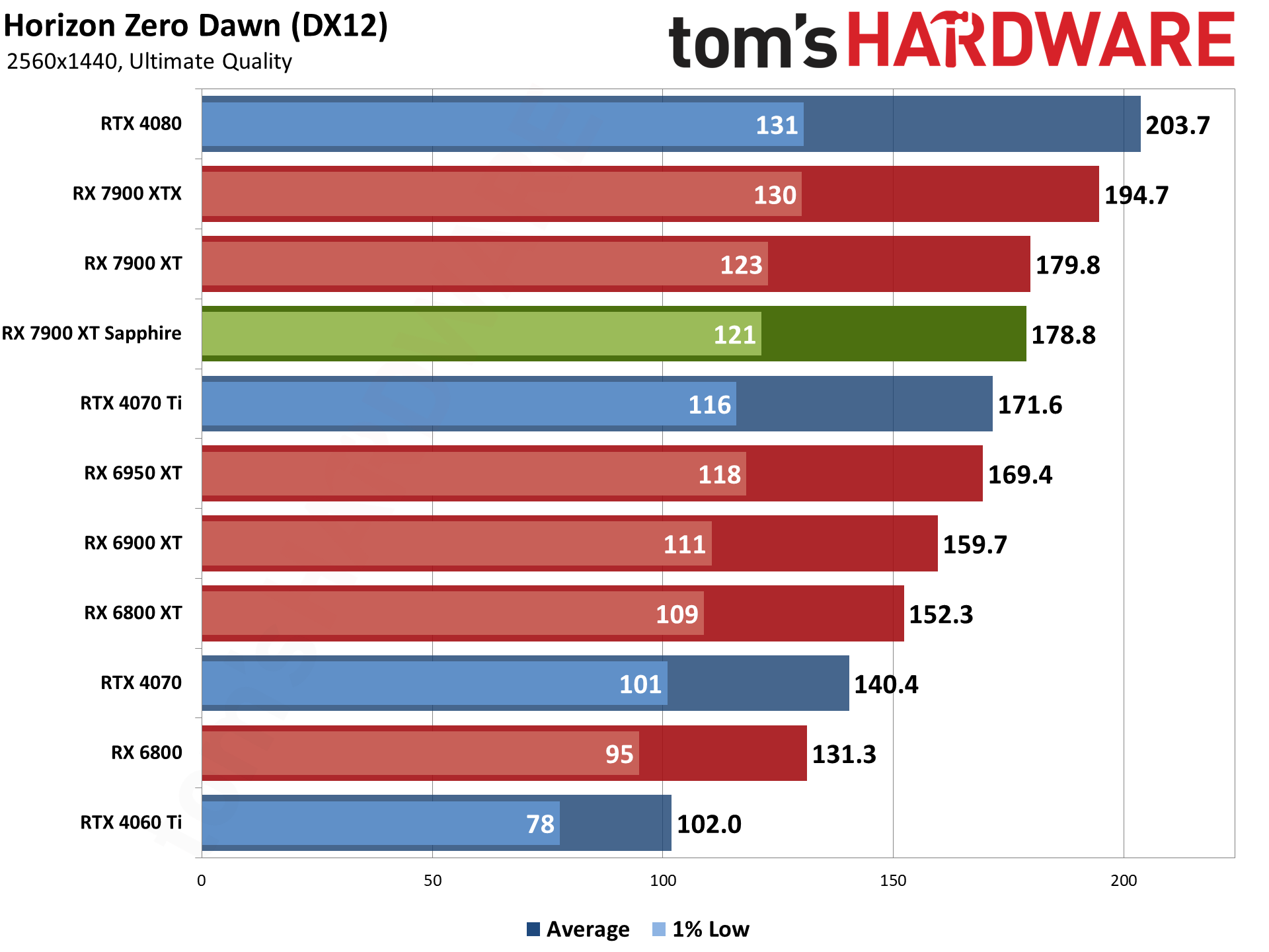
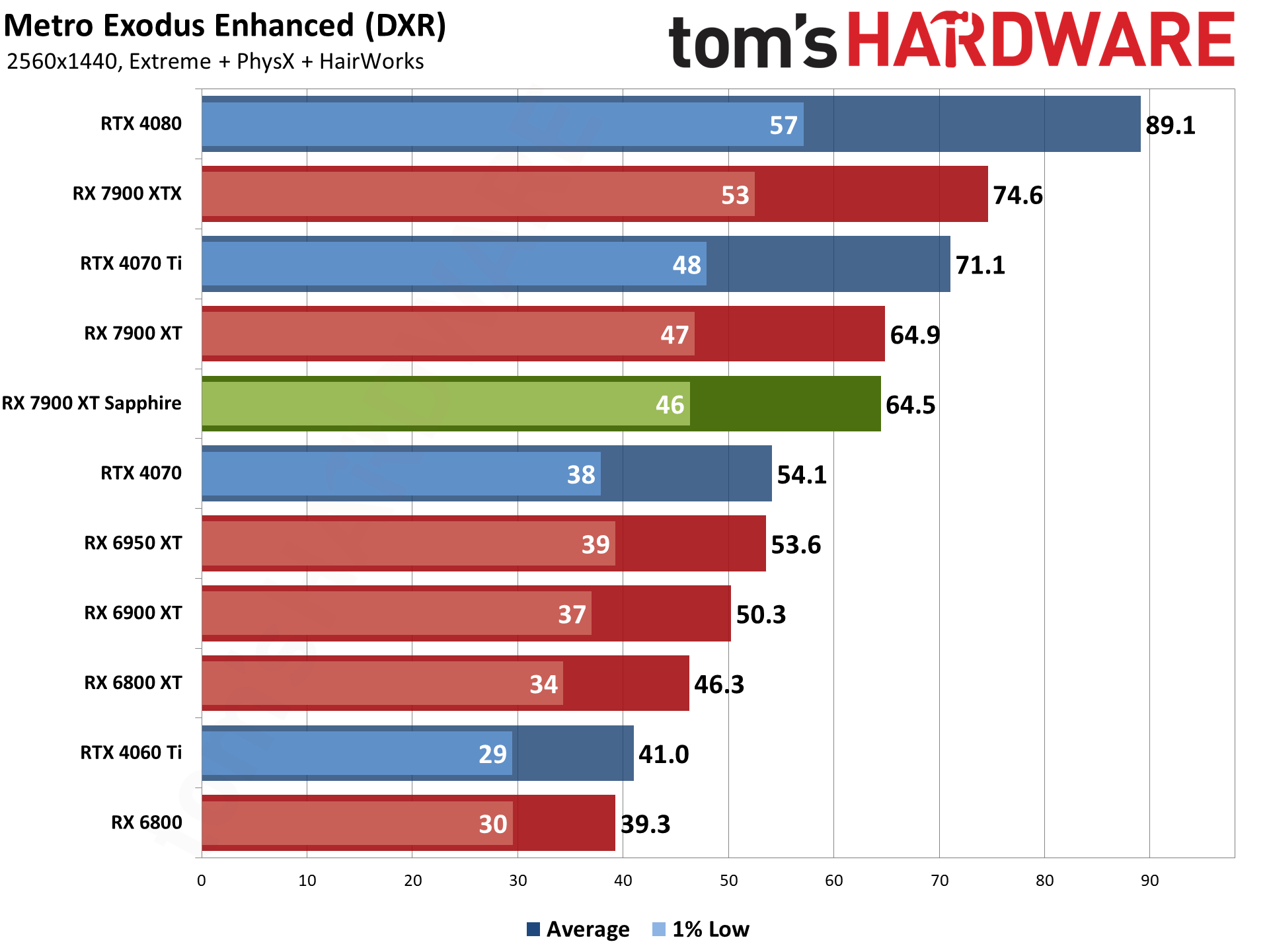
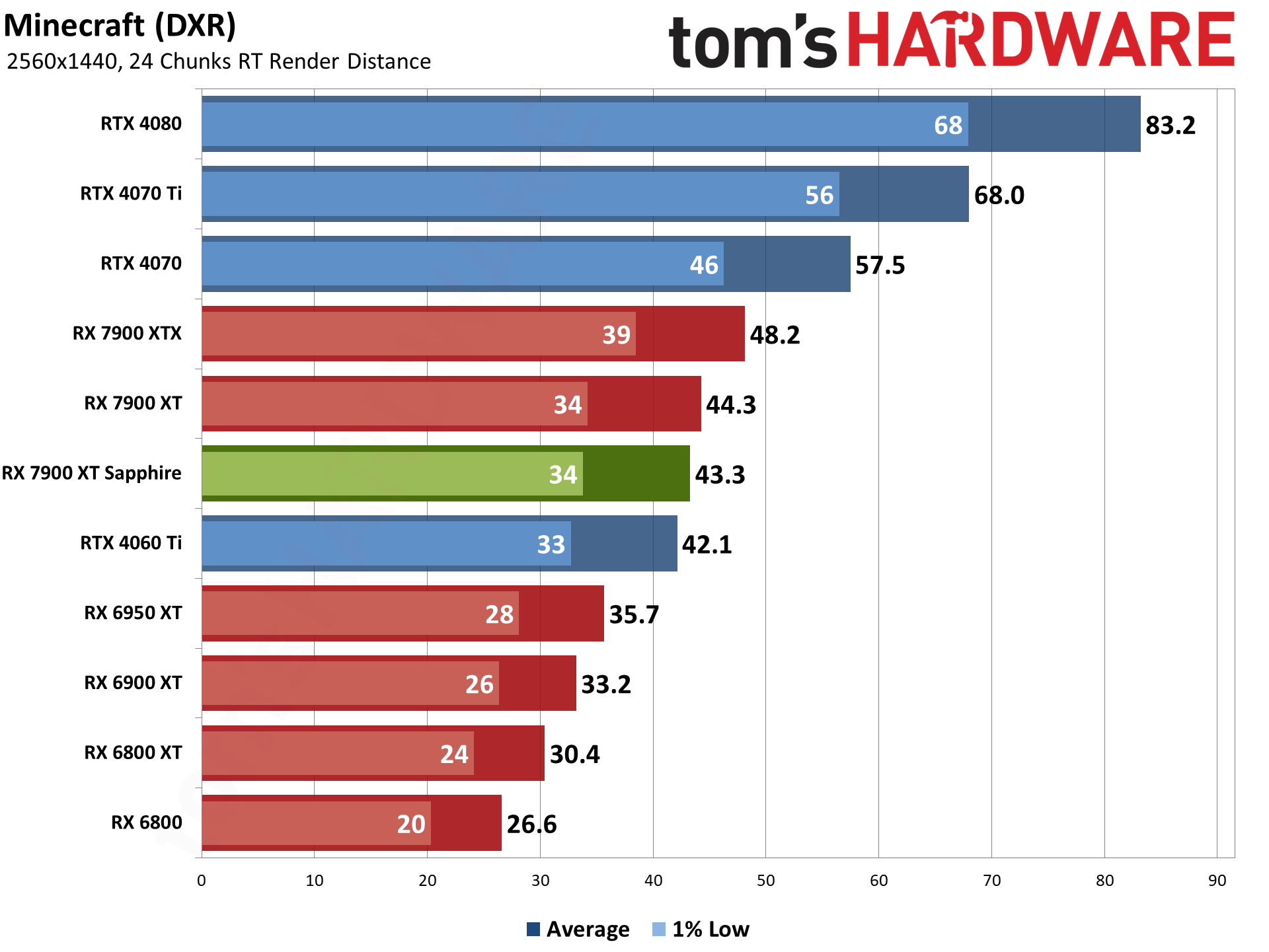
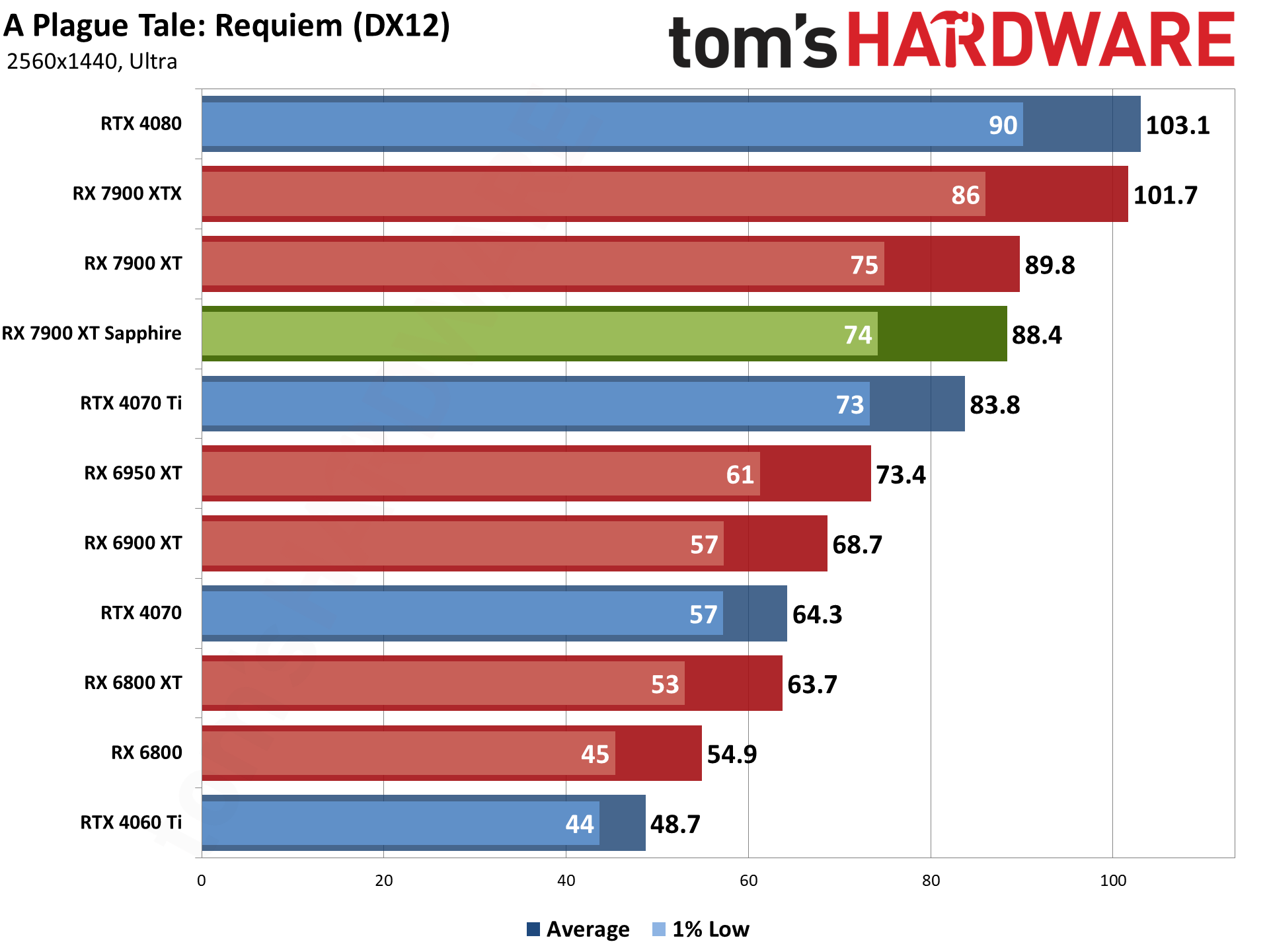
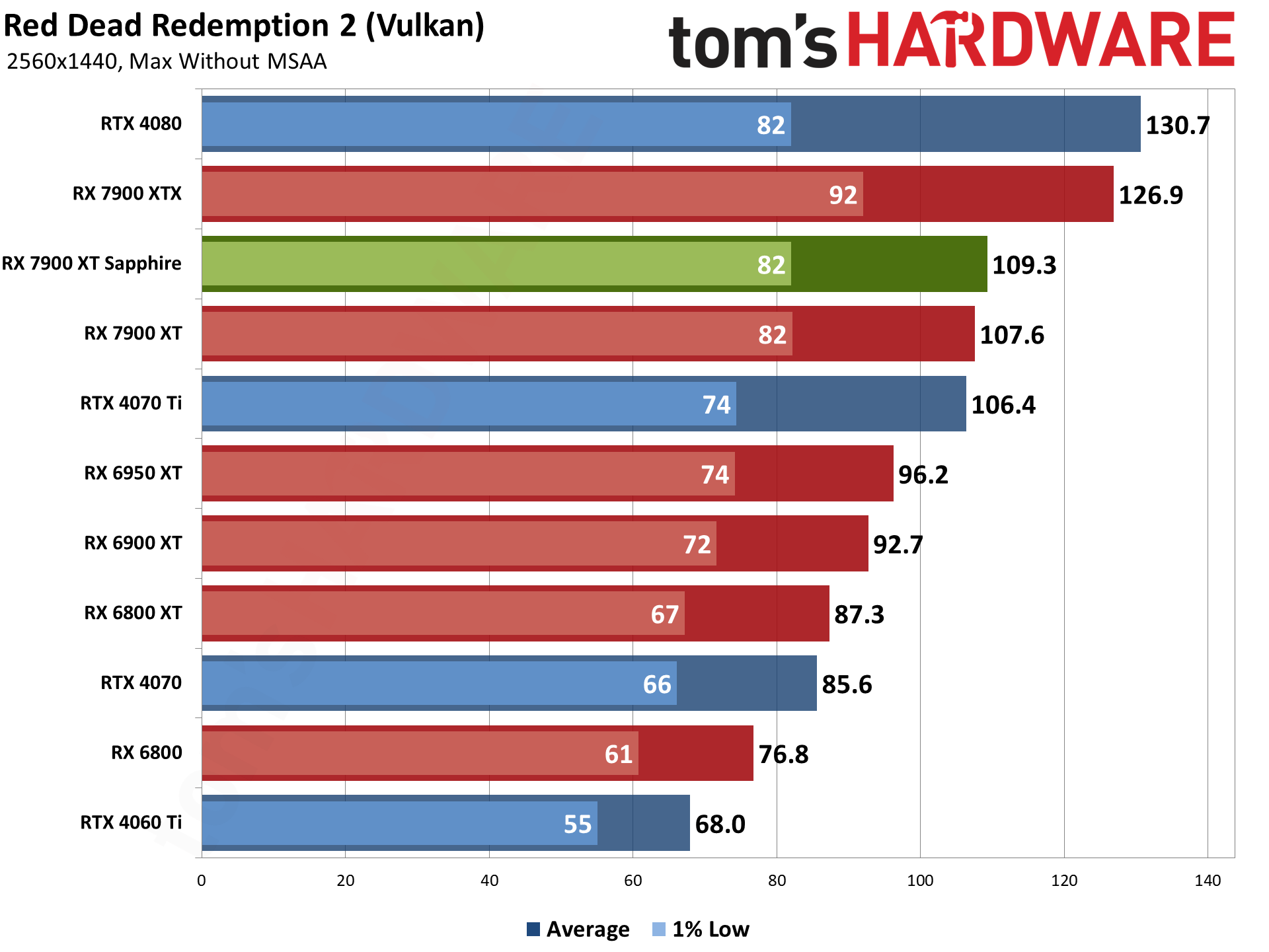
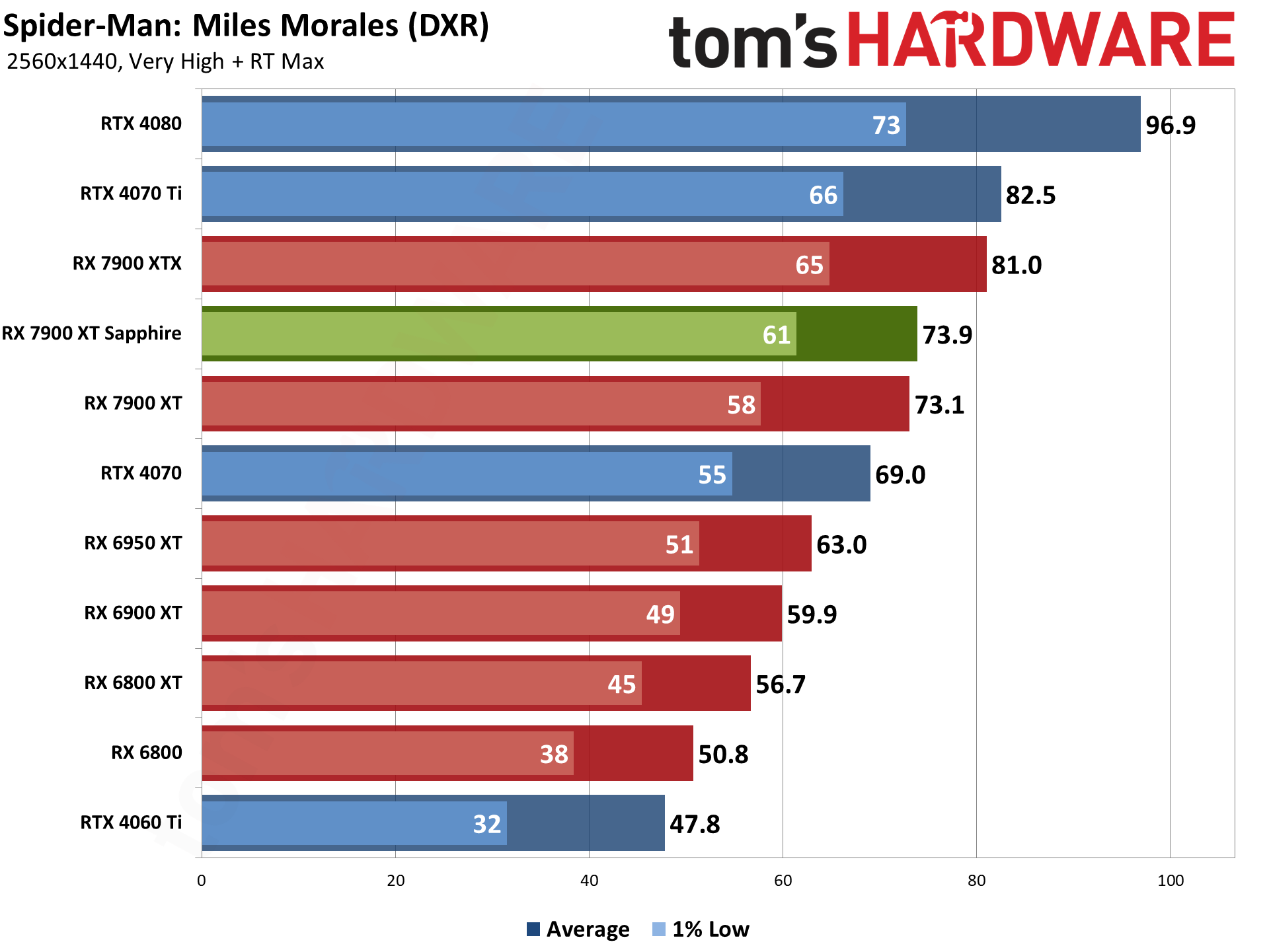
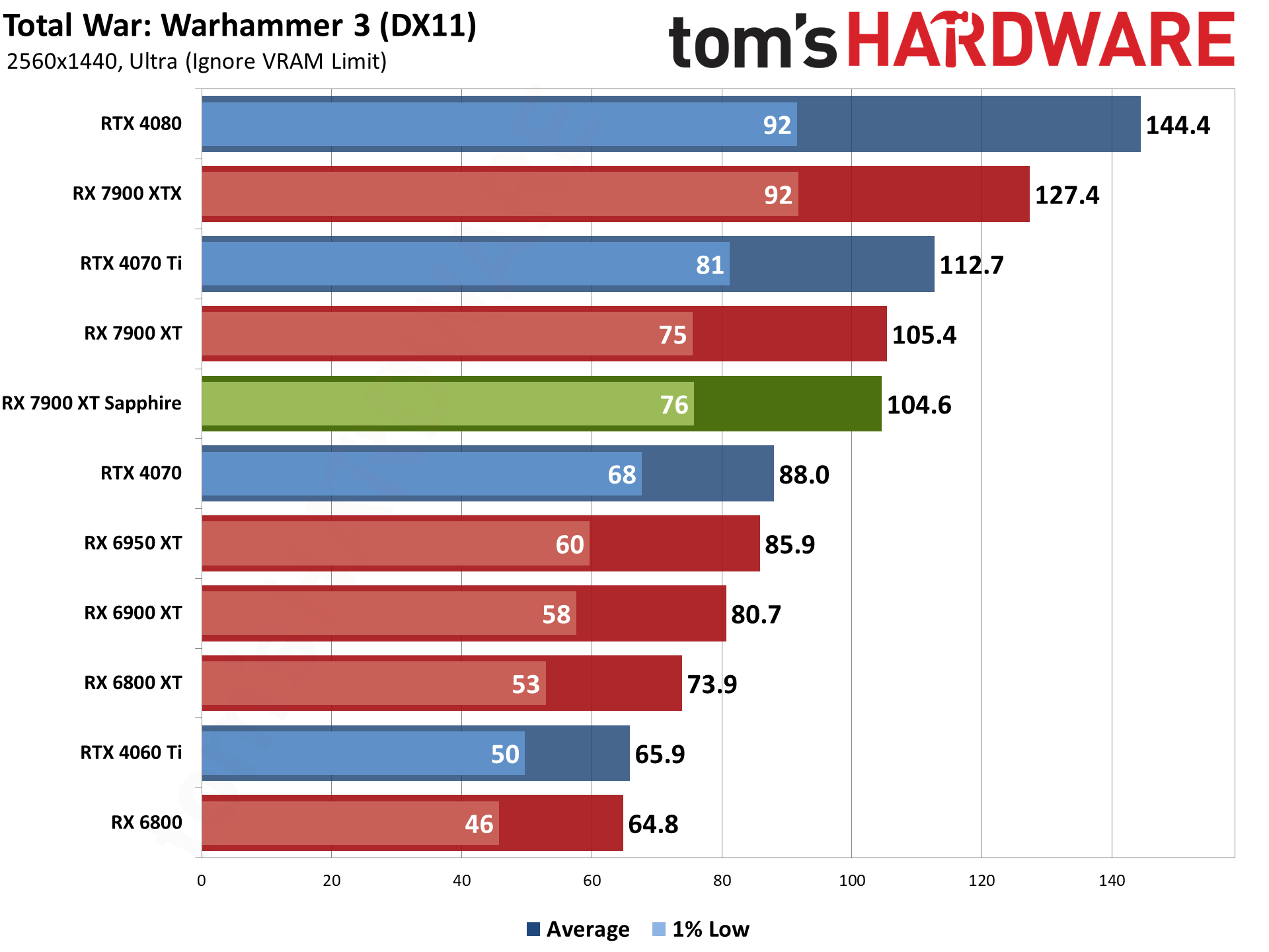
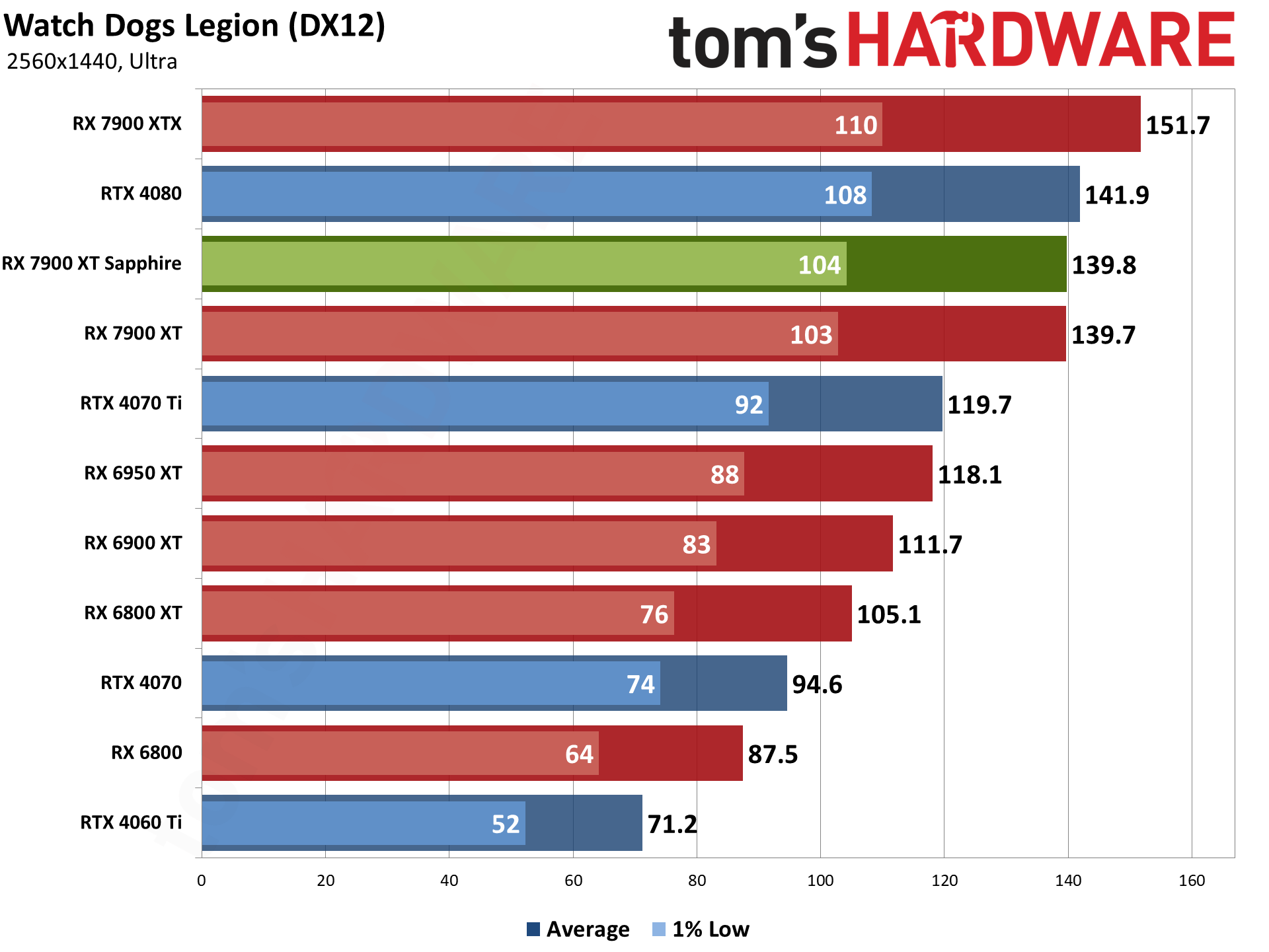
Across our 15-game test suite, the Sapphire and reference 7900 XT cards are basically equivalent, with a spread of -2.2% to +4.3% for the Sapphire card. Forza Horizon 5 shows the biggest change, and that could be due to drivers or a recent game patch. Everything else is within margin of error.
Switching gears to the Sapphire versus RTX 4070 Ti, we'll split that up into rasterization and ray tracing games. The spread for rasterization ends up ranging from -7.2% (Total War: Warhammer 3) to +25.9% (Borderlands 3) in favor of Sapphire. DXR meanwhile is a clean sweep for Nvidia, with anywhere from a 10.3% (Metro Exodus Enhanced) to a 57.1% (Minecraft) lead for Nvidia. Not surprisingly, but the most demanding DXR games are the ones that favor Nvidia the most. Those are also the games where ray tracing makes the most noticeable visual difference.
- MORE: Best Graphics Cards
- MORE: GPU Benchmarks and Hierarchy
- MORE: All Graphics Content
Get Tom's Hardware's best news and in-depth reviews, straight to your inbox.
Current page: Sapphire RX 7900 XT: 1440p Gaming Performance
Prev Page Sapphire RX 7900 XT Test Setup Next Page Sapphire RX 7900 XT: 4K Gaming Performance
Jarred Walton is a senior editor at Tom's Hardware focusing on everything GPU. He has been working as a tech journalist since 2004, writing for AnandTech, Maximum PC, and PC Gamer. From the first S3 Virge '3D decelerators' to today's GPUs, Jarred keeps up with all the latest graphics trends and is the one to ask about game performance.
-
Makaveli I have to agree only the Highend options from both NV and AMD this gen are worth it. Anything below 4080,4090 and 7900XT,7900XTX just looks like trash.Reply -
Alvar "Miles" Udell ReplyOr you can just recognize that HD texture packs often do very little for image fidelity and stick with settings that won't exceed 12GB (unless a game is poorly coded, which unfortunately seems to be the case with a lot of recent ports).
With that attitude you don't need to buy a higher end GPU, just buy a console for much less than $600! -
-Fran- Reply
This is actually a fair take. We're not talking about pennies here. These cards are mega expensive and saying "just compromise" feels wrong to say.Alvar Miles Udell said:With that attitude you don't need to buy a higher end GPU, just buy a console for much less than $600!
I mean, people that buys a Ferrari Enzo won't use it* to haul big cargo or for off-road, but the cards above $300 start nudging the "if you need to compromise, just get a console" lever to me.
As for the rest of the review, thanks for it. This card is a tad underrated as "cheap non-reference" cards go. The XTX version of this is same price as reference and a tad better (both come with the 3 8pin so you can OC it IIRC), so you can give them a good run for the money if you want. Also, they're better for Water Cooling enthusiasts as they keep the 3 8pin and aren't as expensive as the higher end cooled ones.
Everything else is: "this is a 7900XT", haha.
I wish you could give VR games a quick try and comparison, since friends with these are crying when I tell them my 6900XT is performing better at lower power than theirs.
Regards. -
Alvar "Miles" Udell ReplyThis is actually a fair take. We're not talking about pennies here. These cards are mega expensive and saying "just compromise" feels wrong to say.
That's what I was going for. Mainstream and entry level cards have compromises, high end designated cards should only have ray tracing as their compromise (and that's not much of one in many cases).
I also don't agree with TH's testing methodology here of requiring the use of ray tracing, since that is one area that usually brings a significant performance detriment for very little actual visual gain. In my opinion ray tracing shouldn't even be counted as a detail for the purposes of defining "max details", but a processing enhancement effect. Techpowerup's review did not use ray tracing for their average FPS chart (it's in a separate chart). They used 25 games, and some were not included from TH's choices, but it provides a far better real-world result. I hope TH will adopt a policy that will require all GPU tests to be run without RT, and if RT is to be included it should be placed in a separate chart, at least until such time when RT does not carry any more than a 10% reduction in performance.
-
JarredWaltonGPU Reply
If we're going down that road, we shouldn't even test at ultra settings, we should just run everything at medium or high. And for those games that actually have ultra settings that actually do look better? Those are just "processing enhancement effects." We should also just test at 1080p, because 1440p and 4K are "resolution enhancement effects." Or put more bluntly, discounting a chunk of what modern GPUs can do just because you don't like how it impacts GPU rankings isn't something I condone or intend to do.Alvar Miles Udell said:That's what I was going for. Mainstream and entry level cards have compromises, high end designated cards should only have ray tracing as their compromise (and that's not much of one in many cases).
I also don't agree with TH's testing methodology here of requiring the use of ray tracing, since that is one area that usually brings a significant performance detriment for very little actual visual gain. In my opinion ray tracing shouldn't even be counted as a detail for the purposes of defining "max details", but a processing enhancement effect.
You'll note in the articles where I look at new games, the conclusion is often (though not always) that ultra and high are basically equivalent quality but ultra requires more GPU resources for minimal gains. Ray tracing, at least in some games, actually does way more than the minor differences between high and ultra. Weakly/poorly done RT of course doesn't do much. So games like Far Cry 6, World of Warcraft, Shadow of the Tomb Raider, Dirt 5, etc. But when it's actually used more extensively, it can make a bigger difference, like Minecraft, Cyberpunk 2077, and a few other games.
If you're willing to discount ray tracing hardware entirely, you can discount a lot of other stuff as well and end up with consoles. But if you're willing to compromise on ray tracing just because it's an area where AMD GPUs in particular perform much worse than their Nvidia counterparts, that's just intentionally limiting your view of a graphics card to favor one brand. -
Makaveli Reply
What is the difference in price?gg83 said:Whats better the 6950xt for $600 or the 7900xt on-sale? -
sherhi Reply
People have different opinions about visuals but these cards are usually within margin of error of reference models, this test shows it as well. Im sure they can make just a rasterization chart for you personally if you are interested in this model but again I bet its within margin of error of reference model and you can always check that here: https://www.tomshardware.com/reviews/gpu-hierarchy,4388.htmlAlvar Miles Udell said:I also don't agree with TH's testing methodology here of requiring the use of ray tracing, since that is one area that usually brings a significant performance detriment for very little actual visual gain. In my opinion...
Its standard these days to separate those measurements. In this article I dont see 1080p and I am okay with that, its high end GPU and if its good at 1440p then I dont really need another page or two (which takes maybe even an hour or two to write) for 1080p because it wont say much.
I agree, is there any online chart comparing same games´performance of all modern GPUs and consoles? I know digital foundry is doing comparisons like PS5 vs Series X vs high end PC but mixing consoles´FPS into these GPU charts would be interesting.Alvar Miles Udell said:With that attitude you don't need to buy a higher end GPU, just buy a console for much less than $600!
I get your point but its not the best example, resolutions are standardized and its common for GPUs to behave differently, their power curve is often non-linear across resolutions...anyway RT should stay thats for sure.JarredWaltonGPU said:If we're going down that road, we shouldn't even test at ultra settings, we should just run everything at medium or high. And for those games that actually have ultra settings that actually do look better? Those are just "processing enhancement effects." We should also just test at 1080p, because 1440p and 4K are "resolution enhancement effects."
